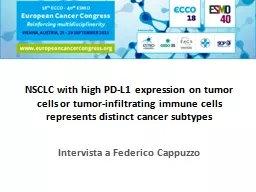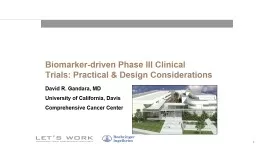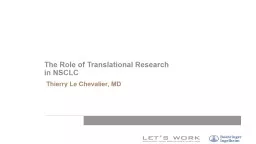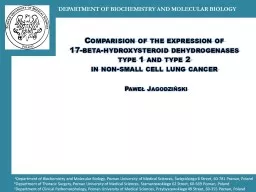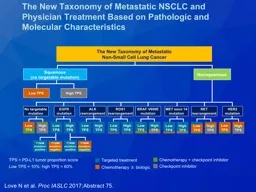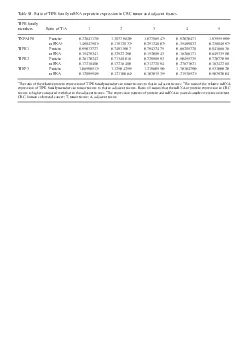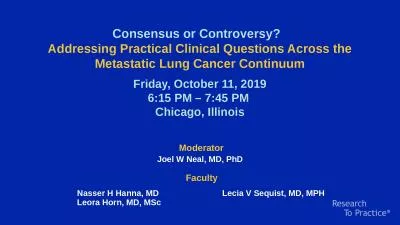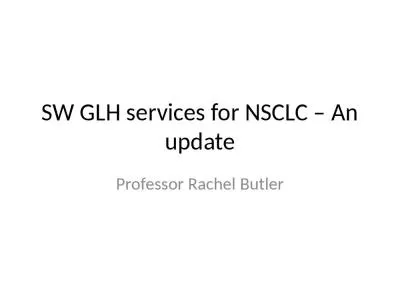PPT-NSCLC with high PD-L1 expression on tumor cells or tumor-in
Author : test | Published Date : 2017-05-07
Intervista a Federico Cappuzzo Background Programmed deathligand 1 PDL1 expression on tumor cells TC or tumorinfiltrating immune cells IC is associated with OS
Presentation Embed Code
Download Presentation
Download Presentation The PPT/PDF document "NSCLC with high PD-L1 expression on tumo..." is the property of its rightful owner. Permission is granted to download and print the materials on this website for personal, non-commercial use only, and to display it on your personal computer provided you do not modify the materials and that you retain all copyright notices contained in the materials. By downloading content from our website, you accept the terms of this agreement.
NSCLC with high PD-L1 expression on tumor cells or tumor-in: Transcript
Download Rules Of Document
"NSCLC with high PD-L1 expression on tumor cells or tumor-in"The content belongs to its owner. You may download and print it for personal use, without modification, and keep all copyright notices. By downloading, you agree to these terms.
Related Documents

